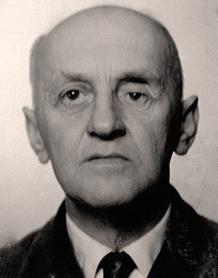Victor Brauner, surrealist painter

Victor Brauner est né le 15 juin 1903 à Piatra Neamt, une ville du nord-est de la Roumanie, dans les Carpates, d’une famille juive. Il entre à l’Ecole nationale des Beaux-Arts de Bucarest en 1919. Ses travaux, jugés scandaleux, le font rapidement exclure. Il prend part aux mouvements locaux d'avant-garde.
En 1930, Victor Brauner est à Paris. Il rencontre André Breton pour qui sa toile L'Étrange Cas de Monsieur K, qui s’inspire du personnage de Jarry (Ubu Roi), illustre avec force tous les aspects des pouvoirs menaçants de la société. Victor Brauner entre dans le groupe surréaliste et expose pour la première fois à Paris en 1934.
De retour en Roumanie, il découvre que la politique antisémite s’y est accentuée sous la pression des mouvements extrémistes. Les artistes juifs d’avant-garde sont accusés de détruire les principes de la beauté classique, la tradition nationale et d’exprimer l'"esprit nihiliste juif".
Victor Brauner quitte donc à nouveau son pays natal pour la France en 1938. Cette même année il perd l’œil gauche lorsqu’il reçoit des éclats de verre au cours d’une altercation entre deux autres artistes. Réfugié en zone libre après la défaite de juin 1940, il est caché en Provence par le poète René Char lorsque celle-ci est occupée. La précarité de sa vie le contraint à utiliser le peu de matériau dont il dispose et il peint à la cire.
En 1954, Victor Brauner est reconnu "réfugié sur place depuis 1938". Il est naturalisé en 1963.
Victor Brauner est décédé en 1966, l’année où la France lui rend hommage en le désignant comme son représentant à la Biennale de Venise. L'ensemble de son œuvre est répartie entre le Centre Georges Pompidou, le Musée d'Art moderne de la ville de Paris, le Musée d'Art moderne de Strasbourg, le Musée d'Art Moderne de Saint-Etienne Métropole et le musée de l'Abbaye Sainte-Croix aux Sables-d'Olonne.